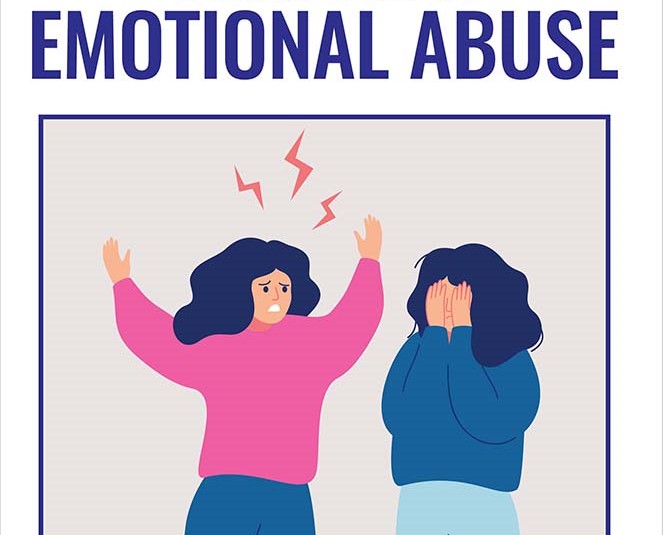An “abusive society” generally refers to a society in which various forms of abuse, whether physical, emotional, or systemic, are prevalent and normalized. This can manifest in different ways and affect individuals on personal, interpersonal, and structural levels.
Here are 5 main aspects of an abusive society:
1. Individual Abuse:
- Physical Abuse:
Acts of violence or harm inflicted on individuals, such as domestic violence, assault, or bullying.
- Emotional/Psychological Abuse:
Manipulation, control, or degradation that affects a person’s mental and emotional well-being.
2. Interpersonal Abuse:
- Discrimination and Prejudice:
Marginalization of certain groups based on factors like race, gender, religion, or sexual orientation.
- Bullying and Harassment:
Persistent and harmful behavior directed at individuals, often with the intention of asserting power or control.
3. Systemic Abuse:
- Structural Violence:
Inequitable distribution of resources, opportunities, and rights, leading to systemic disadvantage for certain groups.
- Injustice and Corruption:
Unfair legal systems, corruption in institutions, and lack of accountability can contribute to systemic abuse.
4. Cultural Abuse:
- Normalization of Harmful Behaviors:
Societal acceptance of behaviors that perpetuate harm, such as toxic masculinity or victim-blaming.
- Cultural Practices:
Some cultural norms and practices may perpetuate abuse, such as honor killings or female genital mutilation.
5. Economic Exploitation:
- Exploitative Labor Practices:
Systems that exploit workers, leading to poor working conditions, low wages, and limited workers’ rights.
Addressing and transforming an abusive society requires a multi-faceted approach involving education, awareness, policy changes, and a shift in cultural attitudes. It often involves fostering empathy, promoting human rights, and creating structures that prevent and respond to abuse. Social movements, advocacy, and community involvement are crucial in challenging and changing abusive societal norms.
Let’s discuss in detail about first type of abuse.
Individual abuse
Individual abuse refers to the mistreatment of a person by another individual, resulting in harm, suffering, or a violation of their rights. There are various forms of individual abuse, each with its own characteristics and impact. Here are some details about common types of individual abuse:
1. Physical Abuse:
Definition: Physical abuse involves the use of force that causes injury or bodily harm to another person.
Examples: Hitting, slapping, kicking, punching, choking, or any form of physical harm.
2. Emotional/Psychological Abuse:

Definition: Emotional or psychological abuse involves behaviors that harm an individual’s mental and emotional well-being.
Examples: Verbal abuse, humiliation, intimidation, manipulation, gaslighting, constant criticism, and control tactics.
3. Sexual Abuse:
Definition: Sexual abuse involves non-consensual sexual activities or coercion for sexual favors.
Examples: Rape, sexual assault, unwanted sexual advances, harassment, and any form of sexual exploitation.
4. Financial Abuse:
Definition: Financial abuse involves controlling or exploiting an individual’s financial resources without their consent.
Examples: Controlling someone’s finances, stealing money, withholding access to financial resources, or coercing financial decisions.
5. Neglect:
Definition: Neglect occurs when a person responsible for another’s care fails to provide the necessary care, leading to harm or endangerment.
Examples: Failure to provide food, shelter, medical care, or emotional support.
6. Cyberbullying:
Definition: Cyberbullying involves using electronic communication to harass, threaten, or intimidate someone.
Examples: Online harassment, spreading rumors, creating fake profiles, or any form of malicious online behavior.
7. Elder Abuse:
Definition: Elder abuse involves mistreatment of older adults, often in the form of physical, emotional, financial, or neglectful actions.
Examples: Withholding medication, physical harm, emotional manipulation, or financial exploitation of elderly individuals.
Note: These forms of abuse can often coexist, and individuals may experience more than one type simultaneously. Recognizing the signs of abuse, fostering open communication, and providing support to victims are essential steps in addressing and preventing individual abuse. Additionally, legal systems and support services play a crucial role in holding abusers accountable and assisting survivors in their recovery.
Let’s discuss the 2nd type of abuse with its types.
Interpersonal abuse
Interpersonal abuse refers to harmful behaviors that occur between individuals in personal relationships, such as family, friendships, romantic partnerships, or other close connections. This type of abuse can manifest in various forms, impacting the emotional, psychological, and physical well-being of those involved. Here are some details about common types of interpersonal abuse:
1. Domestic Violence:
Definition: Domestic violence involves the use of power and control to manipulate and harm a partner or family member.
Examples: Physical violence, emotional abuse, financial control, and coercive behavior within intimate relationships.
2. Verbal and Emotional Abuse:
Definition: Verbal and emotional abuse includes using words and actions to control, manipulate, or demean another person.
Examples: Insults, constant criticism, humiliation, gaslighting, and threats to undermine a person’s self-worth.
3. Bullying:
Definition: Bullying is a procedure of interpersonal abuse categorized by repeated aggressive behavior intended to intimidate or harm another person.
Examples: Physical bullying, verbal bullying, social exclusion, spreading rumors, and cyberbullying.
4. Intimate Partner Violence (IPV):
Definition: IPV denotes to any physical, sexual, or psychological harm by a current or previous partner or spouse.
Examples: Physical assaults, sexual coercion, controlling behaviors, and threats within a romantic relationship
5. Stalking:
Definition: Stalking involves repeated and unwanted attention, contact, or harassment directed at a specific person.
Examples: Following someone, persistent unwanted communication, spreading false rumors, and online stalking.
6. Sexual Harassment:
Definition: Sexual harassment includes unwanted sexual advances, requests for sexual favors, or other verbal or physical conduct of a sexual nature.
Examples: Unwanted touching, lewd comments, requests for sexual favors, and creating a hostile sexual environment.
7. Discrimination:
Definition: Discrimination involves treating someone unfairly or unjustly based on their race, gender, religion, sexual orientation, or other characteristics.
Examples: Racial slurs, gender-based discrimination, religious prejudice, and discriminatory behavior within social interactions.
Addressing interpersonal abuse requires promoting healthy relationship dynamics, fostering empathy and communication skills, and raising awareness about the various forms of abuse. Support services, education, and legal intervention are crucial in helping individuals escape abusive situations and holding perpetrators accountable for their actions.
In the next article we will discuss about the remaining types of abusive society with all their subtypes.




















